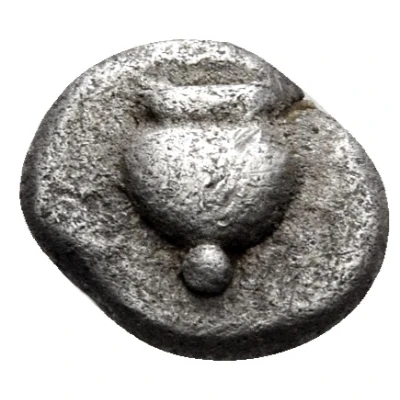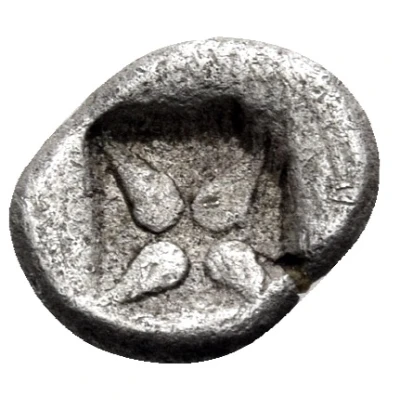


© Nomos AG
Hemiobol 510 BC - 480 BC
| Silver | 0.35 g | 7.2 mm |
| Issuer | Korkyra (Epeiros) |
|---|---|
| Type | Standard circulation coin |
| Years | 510 BC - 480 BC |
| Value | Hemiobol (1⁄12) |
| Currency | Drachm |
| Composition | Silver |
| Weight | 0.35 g |
| Diameter | 7.2 mm |
| Shape | Round (irregular) |
| Technique | Hammered |
| Demonetized | Yes |
| Updated | 2024-10-10 |
| Numista | N#170845 |
|---|---|
| Rarity index | 97% |
Reverse
Star of four rays, all within incuse square
Interesting fact
The Hemiobol coin from Korkyra (Epeiros) was used as a form of currency in ancient Greece, specifically in the 6th century BC. It was made of silver and weighed around 0.35 grams, which is relatively small compared to modern-day coins. Despite its small size, the Hemiobol held significant value in ancient Greece, with one Hemiobol being equivalent to half of a standard drachma, which was the main unit of currency at the time. This coin was used for everyday transactions and was also used to pay taxes and debts. Its small size and portability made it easy to carry and use in daily transactions, and it remained a popular form of currency for many centuries.